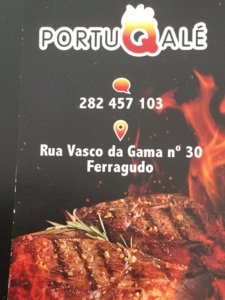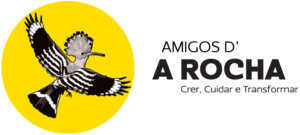
Newsletter August 2020
Welcome to our August Newsletter.
You will notice that our opening article Snapshot has changed this month, we will be highlighting Places & People of Portugal, hope you like the change.
Stay safe and healthy and let’s hope we can return to our more “normal” lifestyles.
Enjoy the summer!
Helen & Filipa
S
N
A
P
SHOT

Mexilhoeira Grande

Age: 5000 to 3000 A. C. (first trace elements of human presence – Neolithic)
Town (since 1st November 1999)
Population: 4100 (Census 2011)
Area: 91,4 Km2
Mexilhoeira Grande is situated in the Southwest of the Algarve, it is within the area of the Portimão Council in the Faro County District. The west limit is the Odiáxere river, the east limit is the Torre River, the Northern limit is the Monchique mountain and Boina River and the South is Lagos Bay. The main characteristics are that is a coastal area, a barrocal (platform of limestone rocks and typical vegetation), the mountain and several water lines (running form North to South). This combination allowed the existence of a microclimate and a large diversity of flora and fauna.
The first evidence of humans in this area are from Neolithic times. The necropolis and the village of Alcalar, probably are from that period. Some lithic artefacts and shell deposits have been found. The name “Mexilhoeira” comes from “mexilhão” (mussel) a marine bivalve very abundant in the past, together with other sea food which named the village. The region also was occupied by the Romans and there is some archeological evidence, the most important in the Roman village of Abicada, from the Ist century D. C. where it appears that manufactured production of wine, olive oil and dry fish which was probably abandoned during the IV century. The Algarve was under Moorish occupation (714 to 1252) and its visible the influences of the Moors even in Mexilhoeira Grande, not in an architectural level but in agricultural technical innovations, like the “nora” (taking the water from the well to water the fields), the watermill (using the power of the water to grind the flour) and some place names (Arão, Abicada, Alcalar…).
Despite many of Mexilhoeira monuments being destroyed it is still worth visiting the Catholic Church (Nossa senhora da Assunção) and the necropolis of Alcalar with the interpretative centre (see here).
Beyond the cultural history, the parish has an enormous biodiversity, mainly due to the habitat diversity founded here. The Alvor wetland it is a Nature 2000 site and an important area for bird migration (Ria de Alvor, Newsletter July 2018).
IFO’s – Identified Flying Objects…
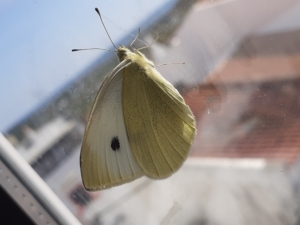
Small White (Pieris rapae, Linnaeus, 1758)

Morphology: It is a medium butterfly from the Pieridae Family, with a wingspan between 45 to 50 mm; the upper side of the wings is creamy white with a spot on the front edge of the wing (triangle shape) the female has 2 dark spots on each forewing while the male has only one; the under side of the wings is dust yellow with the same black spots of the upper side. The females are slightly bigger than males. Flight period is from February to November.
Habitat: Grasslands, farmlands, meadows, gardens and parks, it is common in urban areas.
Distribution: Native from Europe (Eastern Mediterranean) has spread to Asia and North Africa; introduced in North America, China, Australia and New Zealand.
Notes: This species is very similar to the Large White (Pieris brassicae) (February 2018), it is smaller and paler in colour. The caterpillar feeds on cruciferous plants and damage crucifer crops. The adult female can live up to 3 weeks.
Tweet… Tweet…

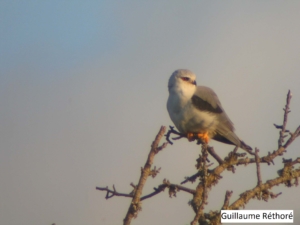
Black-winged Kite (Elanus caeruleus, Desfontaines, 1789)
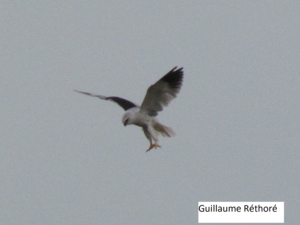
Identification: It’s a small bird of prey from the Family Accipitridae. It has large head and short neck, pointed and broad wings and square-cut tail; above is paler grey with black shoulders; underneath it has whitish-grey colour and dark wing tips. The eyes are red. Males and females are alike.
Habitat and Ecology: Open lands, open oak tree and holm tree woodlands and cereals farmlands. The diet consists mainly in small mammals, reptiles, birds and insects. The hunting strategy is hovering, like kestrels, but with a distinct V silhouette. Nests in trees.
Distribution: Southwest of Iberian Peninsula, Africa and Asia. In Portugal it is more common in the South, especially in Alentejo. It is a resident bird present in Ria de Alvor.
Threats: Least Concern (LC) in the International Union for Conservation of Nature (IUCN) red list. In Portugal was considered Near Threatened (NT) in 2005, although the population tends to increase in the last decades. They are several subspecies according to its distribution; in Portugal it is present the E. caeruleus caeruleus.
DID YOU KNOW?
This year, once more, A Rocha is taking part of Life science in summer (Ciência Viva no Verão), a project together with the Lagos Life Science centre (Centro de Ciência Viva de Lagos), which offers free science and cultural activities all over the country. Our activities include Bird Ringing and Moths. Visit the web site to check all the activities available (requires pre booking): here.
Every year A Rocha receives volunteers from abroad for short periods of time, students or non-students which desire to spend a different holiday and gain some experience in Conservation, science or wildlife, but some of them just want to help with their experience and abilities. If you are one of those people contact us and become a volunteer. Visit our webpage with more information: here.
Do you know Cruzinha’s garden? Our chicken are growing and so are the vegetables!
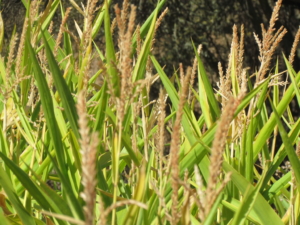
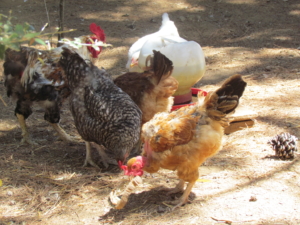

Migration already started! On the 23rd of July, at Cruzinha ringing station, we caught our first Melodious Warbler (Hippolais polyglotta) of the season, . An adult with a lot of fat! On the 30th we caught a Bonelli’s Warbler (Phylloscopus bonelli).

Melodious Warbler (Hippolais polyglotta)
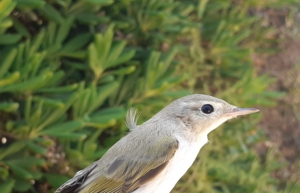
Bonelli’s Warbler (Phylloscopus bonelli)


Probably some of you already visit us on a Thursday open day and had the chance to see some birds and hear our bird talk. But for some of us the day starts really early!
My favourite day of the week, Thursday! The ringing day! My alarm sounded at 5 am, but was worth it, arriving at Cruzinha under the dark sky, the amazing stars and the moon. The nets around the garden, for capturing the birds are opened one hour before the sun rise. It is so quite at that time, it is possible to hear the sound of the sea but as well some birds, like the Red-necked nightjar (Caprimulgus ruficollis), with is amazing calling! (Maybe we are lucky to catch him). It is July and today at this time of the morning it is already 24o C, will be a hot day!
The sun finally raised and slowly the sounds of the day started: the Blackbirds, the Iberian Magpies, the Spotless Starlings, the Turtle-doves, the Greenfinches, the Wren, the Short-toed tree creeper but as well the Iberian Green Frog (Pelophylax perezi) and the Cicadas.
One more day of ringing and we never know what we can catch! Let’s wait for wonderful surprises!
Algerian Sand racer (Psammodromus algirus algirus, Linnaeus, 1758)
Family: Lacertidae
Distribution: Iberian Peninsula, Southeast France and North Africa. In Portugal it is present all over the country except in regions with strong Atlantic influence.
Habitat: coastal dunes, natural pastures, arable land, shrubby lands and Mediterranean woodlands. 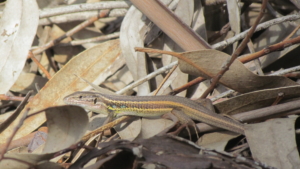
The Algerian Sand Racer it is a small lizard, can reach 30 cm in length, the head is strong; above it is brownish with 2 dorsal stripes orange-whitish and underneath it is paler. The males have blue spots on the armpits, the dorsal scales are big and imbricated.
This species is active during the day, between February and October, especially on sunny days. It is very common in Portugal and it is easy to see, getting sun while bathing on a rock or on the roadside. It can live between 5 to 7 years. The diet consists on small invertebrates like, spiders, beetles, ants and grasshoppers.
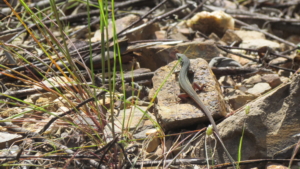 The Latin name Psammodromus means sand racer, because this species is also present in sand dunes. When captured the species can make small cracks or even loose its tail (autotomy – ability to self-amputation when in danger).
The Latin name Psammodromus means sand racer, because this species is also present in sand dunes. When captured the species can make small cracks or even loose its tail (autotomy – ability to self-amputation when in danger).
In Portugal it is possible to find another specie from Psammodromus , the Psammodromus hispanicus, that is only present in Portugal, Spain and France, it is smaller in size (around 5 cm in length) and it is much less common.
POPPED UP

Family: Poaceae
Identification: It is an evergreen, erect herbaceous, can grow up to 10 metres tall; the stem is cane like, hollow inside and divided by partitions at the nodes, the outer tissue of the stem is of a silicaceous nature, it is hard with a smooth glossy surface. The root is a very strong structure forming compact bundles. The leaves are green, elongated heart shaped and alternated. The flowers grow in panicles at the upper tips of the stem and are cream to brown colour; flowers from March to September.
Habitat and distribution: can grow in a wide range of conditions, damp soils, gravelly soils, river sediments from fresh water to semi saline, farmlands but always with some water. It is native from Middle East and North Africa and it is naturalized in all the temperate, subtropical and tropical areas of both hemispheres.
Notes: The giant cane it is considered an invasive species, it behaves aggressively and reproduces quickly and competes with native species, it can change dramatically ecological and successional processes. It is believed that it was introduced in the entire Mediterranean basin in prehistory.
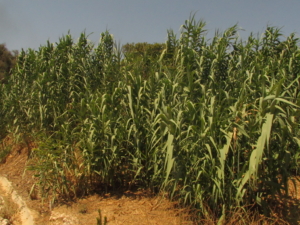
Giant Cane (Arundo donax, L.)
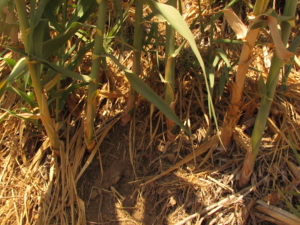
DATES TO REMEMBER

6th, 13th, 20nd and 27th of August – Cruzinha Bird ringing display & Moth Talk (10 to 12 am), requires a pre booking. Book here
Thank you for supporting the Friends of A Rocha Portugal

Dr Roy Rodrigues
Av. Do Brasil, Qta das Palmeiras, Lt P2, R/c A, 8500-299 Portimão
(+351) 282180683
royaldente@gmail.com

Sítio da Amoreira, Lote 12,
Alvor, 8500-045 Portimão
(+351) 282412562/ 925433047
www.transfair.com.pt
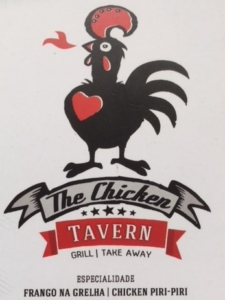
Urbanização Mar e Serra n° 47, Alvor
8500 – 783 Portimão
(+351) 911597735
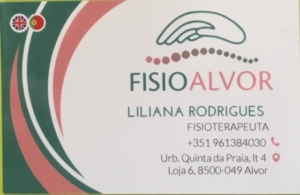
Physiotherapy, Massages (relaxation, sports, therapeutic)
Other therapies
Beauty (manicure, pedicure, hair removal, facials)
Open Monday to Friday
Thought of the month 
“Darkness cannot drive out darkness: only light can do that. Hate cannot drive out hate: only love can do that.”
― Martin Luther King Jr. (1929 – 1968 American Minister & Activist for Civil Rights)

LETS BE GREEN – LETS BE GREEN – LETS BE GREEN 
How to save water
To save water is good for the environment but it is also good for your pocket!
Water is one of our most precious things! Sometimes we don’t even think about it, because it is so easy to get it, like opening the tap!
We need to be aware that just 3% of all the water on the planet is ‘sweet water’, most of this water is ice, in fact just 0,65% is in rivers, lakes or underground. So, water is a scarce resource and we should use it carefully.
Save water!
- Close the tap when you brush your teeth
- Fill the sink for washing your dishes
- Wash your vegetables in a pot with water and not under the tap
- Wash your dark clothes in cold water (doing this you save more water and the colours of your clothes)
- Close the tap when you are washing your hands
- Reduce the time of your showers (1 or 2 minutes, at the end of the year it will make a huge difference to your water consumption)
- Store the water from the shower when you wait for the warm water
LETS BE GREEN – LETS BE GREEN – LETS BE GREEN
Assessing Butterflies in Europe – Project ABLE
Since June 2019, A Rocha is collecting data for the ABLE project, monitoring butterfly’s species in order to improve conservation measures. The project will use the butterflies to indicate the health of Europe’s environment. The responsible for this project in Portugal is Tagis (Conservation Centre of the Butterflies in Portugal – visit here www.tagis .pt – http://www.tagis.pt/homepage.html).
To identify butterflies, it is a very interesting process, initially it is important to catch them to be able to see the wing pattern, which is sometimes not possible when they are flying around. Field work experience is essential, and it is never possible to identify all the species. People helping with the project are constantly learning, also for that reason it is an amazing project.
The methodology of the project is a transect and the monitoring is done every week, if the weather conditions are good (temperature over 13° C and not strong wind). In the Algarve this is possible almost all year. A transect is a path along which one counts and records occurrences of the species, it requires the observer to move along the same designated path to do this.
Between June 2019 and June 2020 we made 29 visits and observed around 24 species of butterflies, of 5 different Families (Papiliionidae, Pieriidae, Nymphaliidae, Lycaeniidae and Hesperiidae). The Hesperiidae Family was the less abundant in numbers and diversity with only 3 species recorded while the Pieriidae Family was the most abundant in number of species recorded. The most abundant species were: Clouded yellow (Colias crocea), Large white (Pieris brassicae), Speckled Wood (Pararge aegeria), Small white (Pieris rapae), Meadow Brown (Maniola jurtina) and Spanish Marbled white (Melanargia ines). The most common specie was Speckled Wood (Pararge aegeria) recorded in 82 % of all the visits. 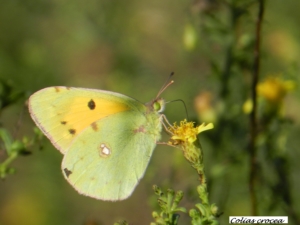
April and May we had months with the higher number of individuals and the higher number of species. These are the spring months with a lot of diversity of flowers and plants which means a lot of food availability.
Species have different flight periods, some are very abundant for a certain period, and are absent the rest of the time, like Spanish Marbled White (Melanargia ines); others can be present for several months, like the Clouded yellow (Colias crocea) (see graphic ). 
Let’s get cooking ! 
Lamb’s rump with mustard sauce
For 2 people
2 units of lamb’s rump of 400 grs
1 branch of rosemary
1 branch of thyme
1 orange
1 lemon
100 grs of butter
2 cloves of garlic
1 dl olive oil
1dl white wine
30 grs mustard
Salt and Pepper
1 dl milk cream
Clean the lamb from the fat and marinate with orange and lemon zest, the garlic and the herbs for at least 3 hours before cooking. Remove the zest of the lamb and keep only the herbs. 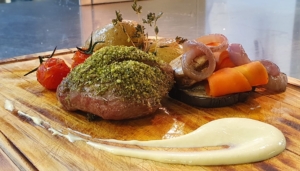
In a sauté, brown the lamb from both sides and spice it with salt and pepper.
Place it in the oven for 7 minutes at a temperature of 160 º C.
In the sauté add the white wine and let it evaporate, take out the herbs and the garlic and add the butter, the mustard and finally the milk cream, let it cook in low fire.
Take the lamb from the oven and let it rest for 5 minutes.
Serve it with roasted potatoes and vegetables.

Nature awaits you in Sagres: registration for annual festival is open
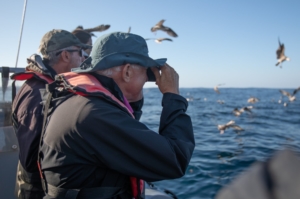 Registration opened on 28th July for Portugal’s largest nature event: the Birdwatching & Nature Activities Festival in Sagres. Scheduled for 2nd to 5th October, the event offers dozens of opportunities to enjoy bird migration and discover the natural wonders of the Algarve. Alongside birdwatching, dolphin-watching and even plant-themed fieldtrips, the programme features a host of different activities day and night, including some webinars for the first time.
Registration opened on 28th July for Portugal’s largest nature event: the Birdwatching & Nature Activities Festival in Sagres. Scheduled for 2nd to 5th October, the event offers dozens of opportunities to enjoy bird migration and discover the natural wonders of the Algarve. Alongside birdwatching, dolphin-watching and even plant-themed fieldtrips, the programme features a host of different activities day and night, including some webinars for the first time. 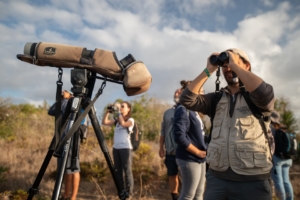
The programme is online at www.birdwatchingsagres.com and the organisers recommend that you register as soon as possible, as some activities quickly sell out every year.
Photos by CMVB
More information: www.birdwatchingsagres.com

Check the website for dates for organised tours
Bluethroat (Luscinia svecica)
The Bluethroat is a species of passerine with many subspecies across Europe and Asia. In Iberia, 4 subspecies can be found, 3 of them being quite common. Azuricollis (without mirror in the blue spot) breeds in Spain and Portugal and winters in West Africa, south of the Sahara. Namnetum (white mirror in the blue spot), which breeds along the Atlantic coast in France winters in Portugal, south-west of Spain and north-west of Africa. Cyanecula (white mirror in the blue spot), which breeds in the North of France, Belgium and the Netherlands winters in West Africa and only passes through Iberia on migration. The last subspecies, svecica (red mirror in the blue spot) migrates through Eastern Europe and is rarely recorded in Iberia. Ringing allows us to know the origin of the birds caught in Iberia, these birds came from Belgium, France, the Netherlands and Germany. It also appears the wintering population in Iberia is mostly composed of adults and there are more males than females. This species winters in wetlands such as saltpans, estuaries or along irrigation channels and is usually faithful to its wintering grounds. 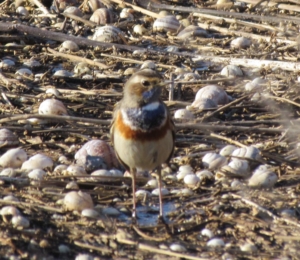
In Portugal, the species bred in 1992 and 1993 in Serra da Estrela and in 2001 in Serra de Montesinho above 1200m. Since the species breeds in Spain (subspecies azuricollis,) in mountains, it was logical finding it also breeding in this kind of habitat in Portugal. However, in Portugal, the Bluethroat is on the limit of its distribution, which is why breeding is irregular. In Portugal, there were few observations of wintering birds before the 2nd half of the 20th century. Records increased during the 1970’s showing a possible change in the wintering strategy of the species. In winter, the species is found along the Portuguese coast, especially in big wetlands such as the Ria de Aveiro, the Tagus and Sado estuaries and the Ria Formosa. It can also winter in smaller areas like coastal lagoons or marshes. The birds wintering in Portugal belong to the namnetum population while the cyanecula birds just pass through as it has been shown by control of birds ringed in Poland, Germany, Switzerland, France, Austria, the Netherlands and Spain. These birds are usually present between September and March. At Ria de Alvor, the earliest birds arrive in August and the latest leave in April. There the wintering population reached 15 birds at the maximum.
Photo and text by Guillaume Réthoré
If you have any queries please do not hesitate to contact us:
friends.arpt@arocha.org
Our office is open from Monday to Wednesday from 9:00 to 12:00 am
Or visit us on our open day: Thursdays from 10:15 to 12:00 am
See map: https://arocha.pt/en/contact-us/
GPS coordinates
37°08’39.8″N (37.1444) 8°36’29.2″W (-8.6081)
(+351) 282 968 380
Thank you for supporting us!
Hope to see you soon!


